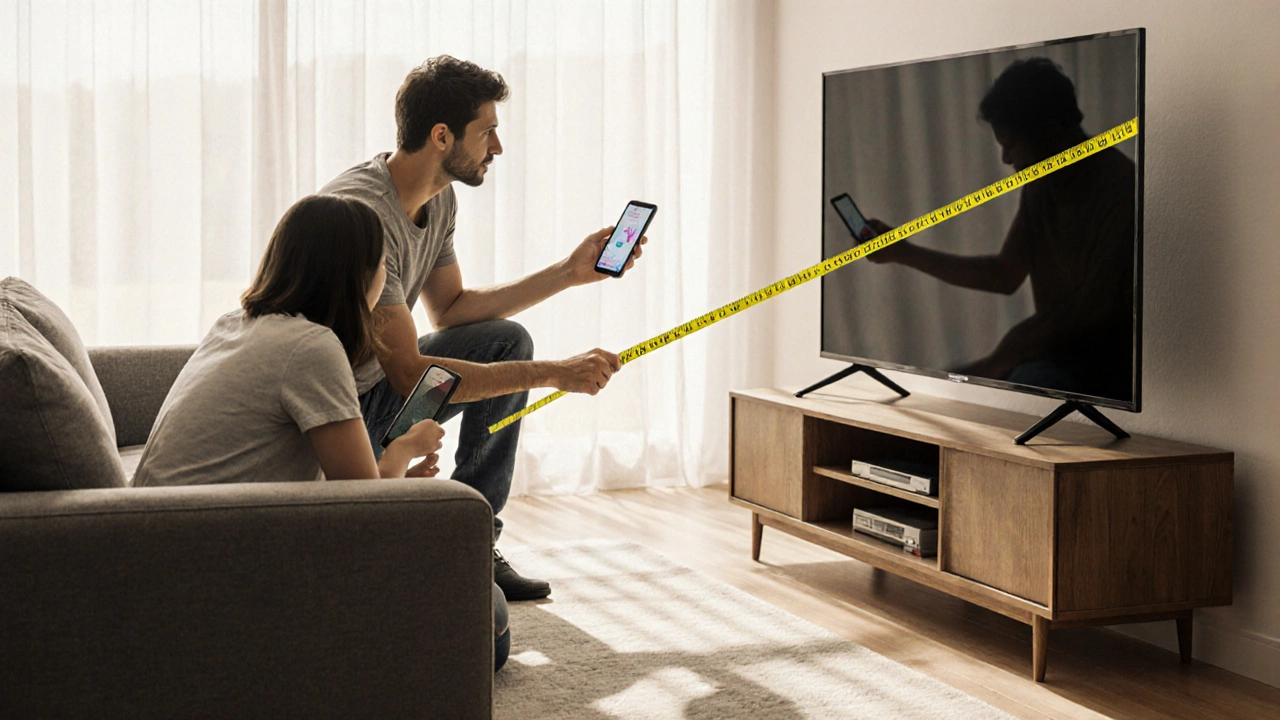TV Stand Height: How to Choose the Right Height for Your Living Room
Ever sat on your couch and felt your neck hurting because the TV is too low or too high? The height of your TV stand can make or break your viewing comfort. Getting it right means less strain, better picture, and a room that looks put together.
Why Height Matters
The human eye naturally sits about 42 inches from the floor when you’re seated. Ideally, the center of your screen should line up with that eye level. If the TV is too low, you’ll tilt your head down and get sore neck muscles. If it’s too high, you’ll look up and get a similar ache. Both scenarios also mess with the picture quality because you’re not seeing the screen straight on.
Besides comfort, the right height helps the room feel balanced. A stand that’s too tall can dominate a small space, while one that’s too short makes the TV look lost on a big wall. When you match the stand height to the TV size and your seating, the whole layout clicks together.
Simple Ways to Measure and Pick the Best Height
Start with your favorite seat. Sit down and measure from the floor to the eye level – most sofas land around 38‑42 inches. Take that number and subtract half the height of your TV. For a 55‑inch TV that’s about 28‑30 inches tall, the ideal stand height ends up around 12‑14 inches.
If you prefer a lower profile, you can aim for the top of the screen to be just a few inches below eye level. That often works well with low‑profile stands or media consoles. For larger TVs (65‑75 inches) you might allow a slightly higher stand because the screen itself is taller.
Don’t forget the stand’s width. It should be at least as wide as the TV, but a little extra can give a stable look and space for speakers or décor. A common rule is to add 2‑4 inches on each side.
When you have multiple seating options (like a sectional and a recliner), pick the height that works best for the spot you use most. You can always add a small riser or a low footstool under the stand if you need a tiny tweak.
Finally, think about cable management and storage. A stand with a compartment or a back panel can hide wires and keep the area tidy, which adds to the visual appeal.
In short, measuring your eye level, subtracting half the TV height, and checking the width will give you a solid starting point. Test it out, adjust a bit if needed, and enjoy a comfortable viewing experience every time you press play.
Ideal TV Height on a Stand: Find the Perfect Viewing Level
Learn the perfect TV height on a stand using simple math, ergonomics tips, and a handy height chart to avoid neck strain and enjoy optimal viewing.
MoreHigh or Low? Picking the Right TV Stand Height
Wondering if your TV should sit high or low? This article looks at why TV height matters, and how it affects your comfort, your neck, and even the look of your living room. We’ll cover what to measure, common mistakes, and how to figure out the best position for both binge-watching and gaming. You’ll also find practical tips for choosing or adjusting your TV stand. By the end, deciding on that perfect TV height actually gets simple.
More

